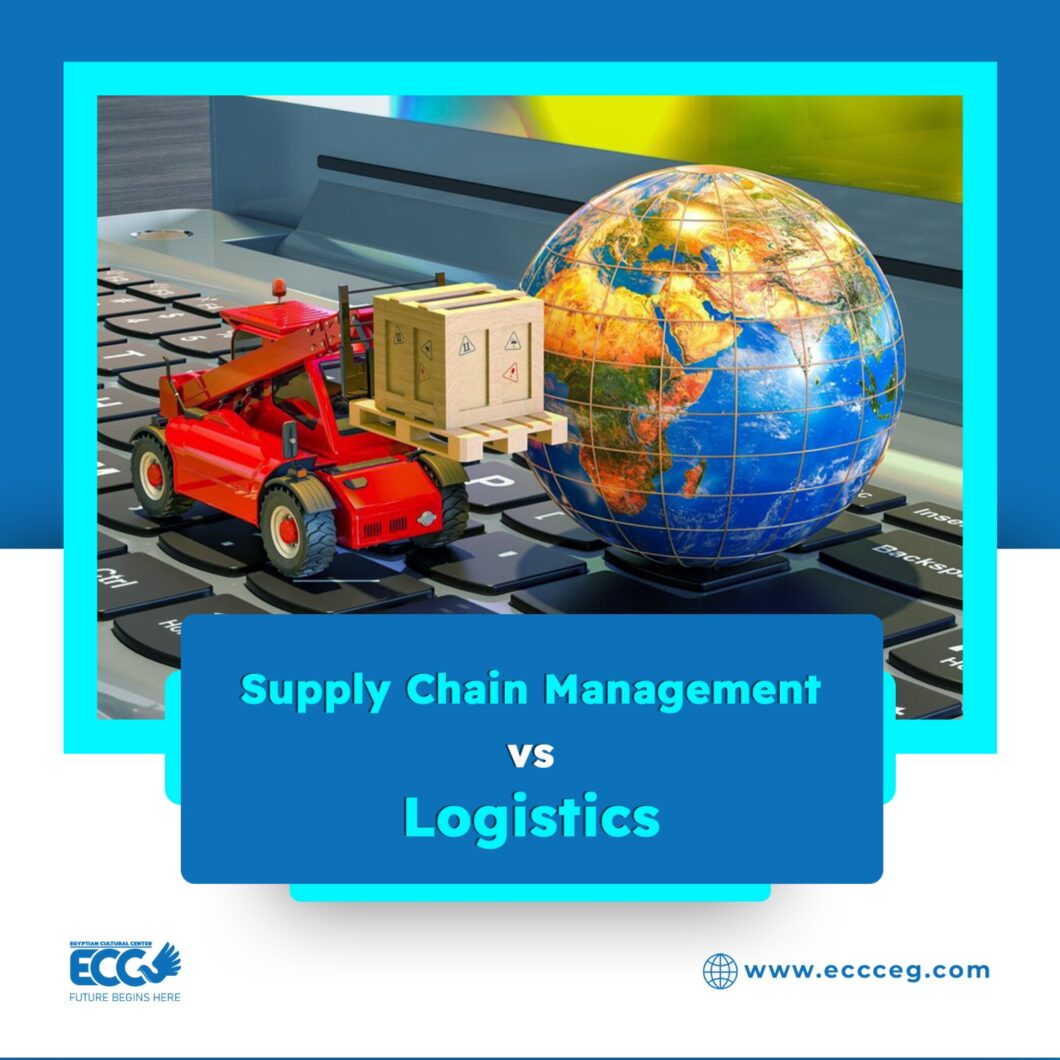The terms logistics and supply chain may seem interchangeable, two different ways of referring to the same thing, but they are not.
In practice, these are interrelated and interdependent, but fundamentally different concepts: broadly speaking, logistics is a key component of supply chains.
Understanding the difference between logistics and supply chain is essentially both to organize the company’s operational efforts and to address the planning, execution, and control of orderly and systematic logistics and supply strategies. They are symbiotic terms, they depend on each other, and the success of the companies depends on both.
Read More: Difference Between: Business Plan VS Strategic Plan
What is a supply chain?
A supply chain comprises the sum of all a company’s efforts necessary for the existence of a product, from the provision of raw materials to the delivery of the finished product. This process can, in turn, be divided into 4 main stages:
Planning: in this stage the steps to follow, the strategy to be followed in the execution of the supply chain, as well as the contingency plans are defined.
Supply: once the strategy has been outlined, the necessary inputs and raw materials are acquired to begin manufacturing the products.
Production: once the raw materials and necessary components are received, the final products are manufactured.
Distribution: Distribution simply refers to the movement of finished goods to pick-up, distribution, or collection points.
A supply chain involves a whole series of processes, many of which generally escape the direct control of companies, which usually delegate part of the operational burden to external logistics partners. As we will see, this is especially common in the case of supply chains with international components.
What is logistics?
Logistics is a more focused concept than the supply chain and refers to the efforts put into the transportation and storage of goods and supplies, from the acquisition of raw materials to the delivery of the final product. This also includes inventory management, suppliers, transporters, and distributors.
In other words, logistics is a fundamental part of the supply chain: it covers the most practical aspects of the chain, addressing, for example, the transportation of components or supplies between suppliers and factories or of finished products between warehouses and distribution or sales centers. This, in addition to inventory management, so necessary for the proper functioning of a supply chain.
Contact with IBAS: +201000498154
What are the main differences between “Supply Chain – Logistics”?

In general terms, Logistics integrates transportation, storage, and order preparation. In a company, the facilities and means of distribution are also known as the Supply Chain, in other words, it is known as the entire manufacturing or production process of a product until delivery to the end customer.
To make it easier to understand, we can take an example of the textile sector, where it is necessary to obtain raw materials such as cotton, wool, and other materials to make different products.
Logistics will be in charge of processing the garments, their storage, orders, and transportation; The Supply Chain is responsible for supplying raw materials for the production of the product, that is, everything that has to do with the supply of resources at the place of origin and handling, design and manufacturing.
In other words, they are the strategies that have to be carried out for the best delivery and administration of a product and/or service, however, Logistics and the Supply Chain, no matter how many differences they have, both involve the transformation of the product and/or service until it reaches the end customer, and their common goal is to achieve customer satisfaction with supervised processes and taking care of each step-in detail.
Read More: 10 BEST MBA PROGRAMS IN EUROPE
What are the objectives of Logistics and Supply Chain?

It is worth mentioning that both terms seek the same result, each one focuses on improving the shortcomings of the other, therefore, it is of utmost importance to carry out strategies that benefit both practices. In this way, we can clarify that the functions and objectives of each one is complementary and, in a business, it is necessary to perform both tasks to increase productivity and improve delivery times to its customers.
As we have already mentioned previously, the main objective of Logistics is to successfully deliver a product or service, but there are some other objectives in which this concept specializes, for example:
- Reduce and optimize costs invested in transportation.
- Acquire and move merchandise with the most optimal conditions.
- Control the flow of goods.
- Manage human resources more efficiently in the fleet.
Likewise, we find that the functions that are most assigned to Logistics are:
- Inventory control and management.
- Management and planning of transportation and transfer of merchandise.
- Study the fluctuation of supply and demand in the medium term.
- Stock management.
- Organize the product sold.
- Fleet control and maintenance.
As we have mentioned before, many people believe that Logistics and Supply Chain are synonyms, but the truth is that the Supply Chain acquires greater responsibility than logistics.
The Supply Chain includes any manufacturing or production process until delivery to the customer. Furthermore, it contemplates three basic elements:
Contact with IBAS: +201000498154
- Supply
refers to the raw materials with which the different products are produced. In this sense, she is in charge of knowing its origin, its extraction the best ways to obtain it, and the deadlines in which it is delivered.
- Manufacturing
Another of the basic elements that the Supply Chain is responsible for is supervising manufacturing since it is the part that allows obtaining the finished product that meets customer expectations.
- Distribution
This is the part of the Supply Chain on which the main emphasis is placed, since it is responsible for placing each order through a distribution network that meets the deadlines agreed with the end customers.
In summary, Logistics and Supply Chain are part of the same, with tasks assigned to managing storage, the transportation of goods that enter and leave your warehouse, the timing of your own transportation, warehouse inventory, and preparation of orders.
It is important to mention that for the Logistics and Supply Chain of your business to work in the best possible way, it is important to have the right team. Not to mention that you need to go to experts to help you improve your processes,
Read More: Do I need work experience for MBA
The functions of logistics in the supply chain

Logistics is an integral part of the supply chain and, as such, is assigned a whole series of functions necessary for the functioning of the chain. While the functions of the supply chain cover the entire planning, supply, production, and distribution processes of a product, those of logistics are generally reduced to the following:
- Order processing: This is the task that usually sets the supply chain in motion, as it influences a subsequent series of tasks and factors, such as sourcing and production needs, demand forecasting, inventory management and supplies, transportation, etc.
Inventory management: inventory management encompasses the precise control of available materials, supplies, and finished products, to accurately determine the logistical needs for supply and production.
- Materials and supplies management: the management of raw materials and supplies is key to guaranteeing a fluid and efficient production process.
- Warehouse management: the design and management of processes within warehouses and distribution centers is an area of logistics that has a lot of potential to reduce times (loading and unloading, order preparation, packaging, packaging, etc.) and costs.
- Transportation: Transportation is a key function of logistics in the supply chain, necessary to unify the different delivery and reception points of inputs, components, and finished products, from suppliers to the end customer.
Two issues are key when thinking about the functions of logistics in the supply chain: first, that each of these could be subdivided into an endless number of tasks; second, that these functions (and the tasks that comprise them) will depend broadly on the type of company in question and, at a specific level, on each particular company.
Of course, these are the main functions of logistics. Depending on the case, we could also include others here such as packaging management, order tracking, returns management, and more.
Contact with IBAS: +201000498154
Conclusion
Logistics and the Supply Chain, no matter how many differences they have, involve the transformation of the product and/or service to the final customer.
For some years now there has been a problem with the terms Logistics and Supply Chain, due to several people who do not identify the main differences between these two activities and therefore do not understand the objectives of each of them.
Logistics is an activity used by companies, whose main objective is the planning and management of all operations that are directly related to the flow of raw materials, semi-finished products, and/or finished products, from their origin to the final consumer.
Supply Chain is nothing more than the set of ‘activities’ or ‘operations’ involved in carrying out the sales process of a product in its entirety, going from the moment it is obtained in raw materials, product manufacturing, production, storage, distribution, transportation, and delivery.


